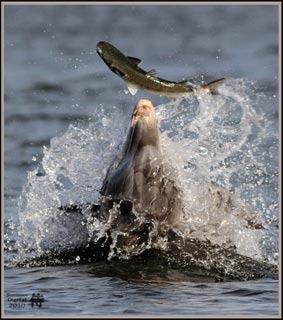
Copyright © Jim Austin 2010. All rights reserved.
Bottlenose Dolphin Playing
Q. When you go out in the field or should I say, sail the seas to shoot, do you have a preconceived notion or goal of what you want to accomplish or does the shoot, more times than not, seem to just take on a life of its own?
A. I definitely have a preconceived subject matter that I’m working on. For example, in spring 2010, I’m working on a series of portraits of the oldest people in small towns of the Bahamas. What makes photography amazing is the way the camera points both ways, and photographing invites you to look at your own character, issues and motivations.
After doing photography for 35 years, it’s fun to let go of chasing decisive moments and be open to what emerges as you’re making pictures. Some projects flow easily, and others challenge me way beyond my ability. Other times, Mother Nature has a life of her own. For instance, seeing and photographing dolphins, and whales and puffins, even other ships, is an indescribable joy. They appear, you go with their flow, and the photography takes on its own energy.
Q. It shows through your photos that you have a passion for your craft. When do you feel the most creative? What occurs within your creative, inspired brain?
A. As photographers, we all have cool and hot periods. I’m inspired by music, beautiful light and by hanging out with fun people…these things keep me motivated to make images. I get inspired by seeing the beauty and wisdom inside people, by their courage. Creative times seem to be waking from dreams or in the early morning, when the juices are flowing. Then, there are times when subjects are so powerful, you just have to document the moment as it happens, and that can be anytime at all. And I practice–each morning I make myself photograph anything, anything at all, as a warm up exercise—I put on the camera when I put on my shoes.
Q. In viewing some of the hundreds of incredible photos on flickr(http://www.flickr.com/photos/jimaustin/sets/), you cover a wide range of subjects and techniques in your photography—HDR, portraits, birds, photo art, nature, water….. What do you enjoy most?
A. Any subject that I become passionate about is enjoyable. The key for me has been to stay with, and come back to, certain themes over many years, so you’ll see that within the 800 or so photos in my Flickr gallery. I’m a social photographer, and really enjoy relationships with friends who are also photographers posting to Flickr. Flickr is an amazing experience and I’ve learned from its discussion groups, so I try to post tips I hope might help other photographers too.
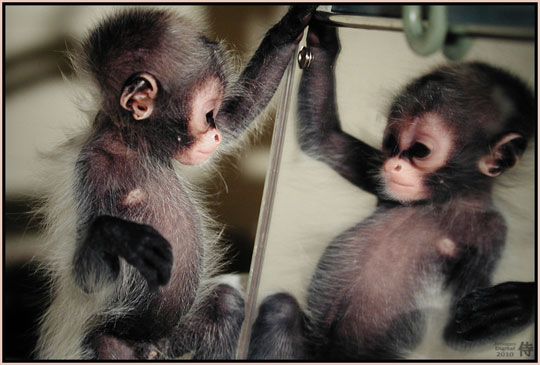
Copyright © Jim Austin 2010. All rights reserved.
Monkey in the Mirror
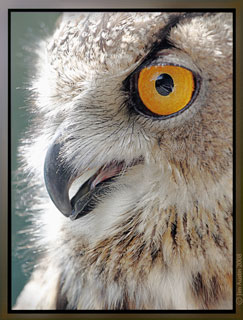
Copyright © Jim Austin 2010.
All rights reserved.
Eagle Owl
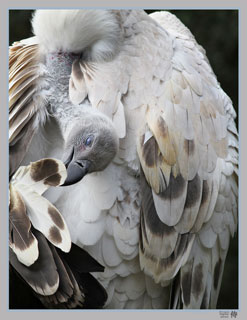
Copyright © Jim Austin 2010.
All rights reserved.
Cape Griffon Vulture
Q. You have a wonderful sense of design and composition. Are there elements that draw your attention more consistently —light, textures, colors, lines….? Do you believe it is inherent in you, learned, or a combination of the two?
A. Thanks Marla. Light is the element that reaches out and grabs me. I know that balancing color is a key in my work. At times it is so powerful, I move from what I’m doing to follow these colors or light moods. I’m interested in time and how photography balances and distorts it. A sense of composition is something anyone can learn. Perhaps the interest in those elements is alive early in life, and then you pursue learning about it, because it interests you, so it may be a combination of the two.
Q. What do you hope to convey to the viewer through your photography?
A. Respect. Respect for the subject, for photography, and for what is in front of me.
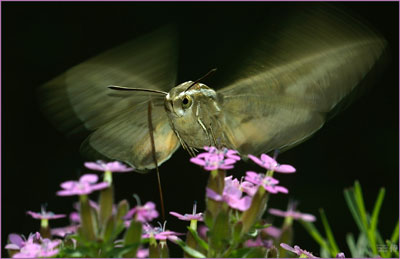
Copyright © Jim Austin 2010. All rights reserved.
Hummingbird Moth
Q. You have accomplished much in your career, including having some of your work displayed in the Smithsonian & Denver Art Museum. How did this come about?
A. The work that went into Nature’s Best Competition was a picture of a White Sphinx Moth, also know as the Hummingbird Moth, and it was briefly part of an exhibit at the Natural History Museum in the Smithsonian. I entered the competition and was one of a hundred chosen from 10,000 entries. It happened from photographing moths every day for a month, and then just being stubborn enough to keep sending entries into competition.
Q. In addition to all of the articles you’ve written for Apogee Photo and other publications over the years, you now have four books available. Could you tell us what the driving force was behind each book and give a brief description of each for our readers? Does the idea of a book come first or do previous photos start the concept of the book?
A. Lately I’ve been publishing on High Dynamic Range for OutbackPhoto.com, WeArePhotographers.com, and DeepSleep.org in the UK. The photos start the book concept. Also, questions about new areas of photography, like HDR, can start a book.
As far as past books, Haiku Photography combines poetry with nature photography. Sight Lines was about portraits taken when I was trying to learn about 1940’s Hollywood portrait lighting in black and white. I worked with a makeup stylist and designer Geoffrey Fowler, and in the studio we made a series of portraits over a year of women in the style of Hollywood movie stars of the 30’s and 40’s. My two recent books are Photopia and Pixels on Passage. The driving force behind Pixels on Passage is sharing ways to make photography better while cruising on a boat, but the tips apply to all digital photographers who are traveling. (You can download Pixels on Passage, a 32 page e-Book for Kindle and i-Pad for four dollars.)
Q. Did you ever have an “aha!” moment that changed the course of your craft?
A. Photographing the beauty of the Colorado mountains was an “aha!” experience. Then, about 2002, I was teaching a class in digital imaging at Metro, and while I was answering student questions, realized that the learning curve for digital was infinite and always changing, so that for the next few decades, digital photo was so interesting I could devote myself to learning it full time. Another “aha!” was discovering HDR software about five years ago and having this marvelous set of tools to express all the light beauty we see in our minds eye (smiling).
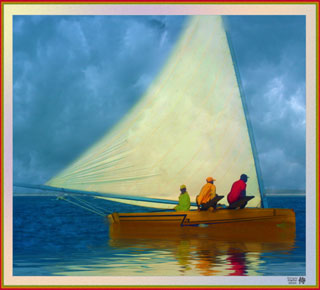
Copyright © Jim Austin 2010. All rights reserved.
Artistic Photo of the Gulf Stream
Q. What do you envision for your photography and writing in the future? What is it about yourself that keeps you moving forward in your chosen crafts?
A. There are infinite possibilities for the future of photography. For me, adventure photography and sharing the great outdoors with others inspires me a lot, so I’d like to keep doing adventure photography workshops, keep writing on new techniques like HDR, and keep doing creative photography. Sharing and learning from others who love photography keeps me moving. The other thing I envision is that our photography media, storage, computers and cameras will be totally different five to ten years from now, so I like to keep an open mind’s eye.
Q. Is there anything you would like to share with those photographers of the future that can help inspire them to always follow their dreams of becoming a photographer?
A. Take a lot of bad pictures that no one will ever see! Keep an open mind. Photograph daily. Attend fully to the subject being photographed. Put your camera around your neck when you put on your shoes. Explore light and do something unique that no one else has done before. Strike a balance between social media and time on your own to photograph. And I like what Henri Cartier Bresson said (the French photographic genius), “It’s more important to click with people than it is to click the shutter.”
Thanks again Marla, it’s been a pleasure.
by Marla Meier

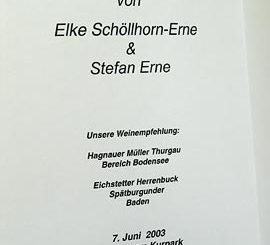
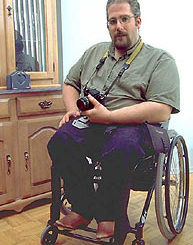
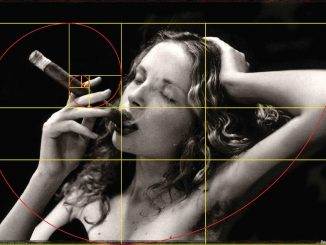
Leave a Reply